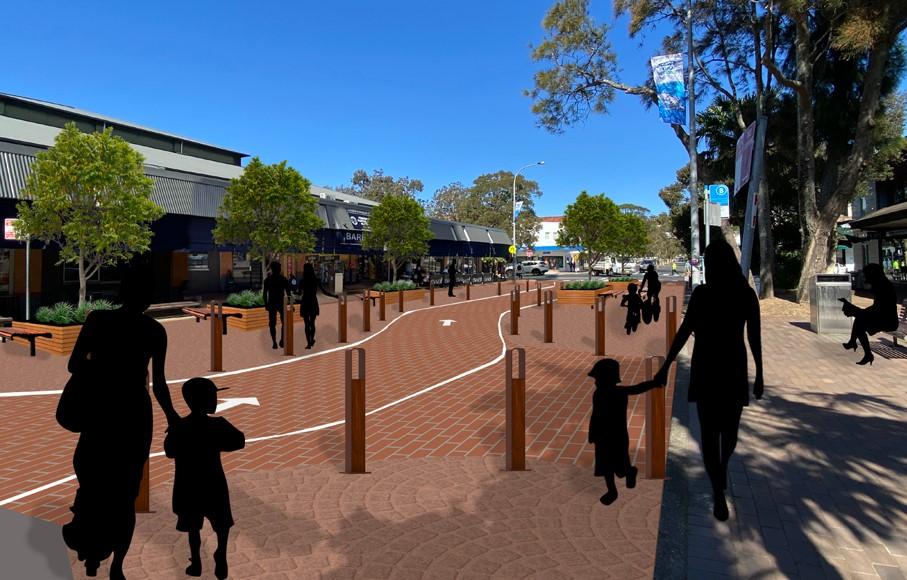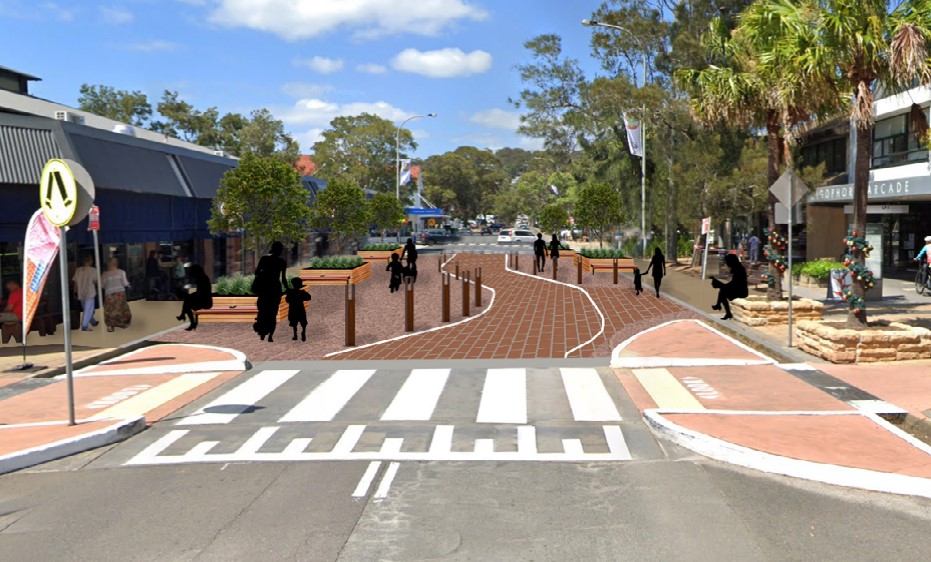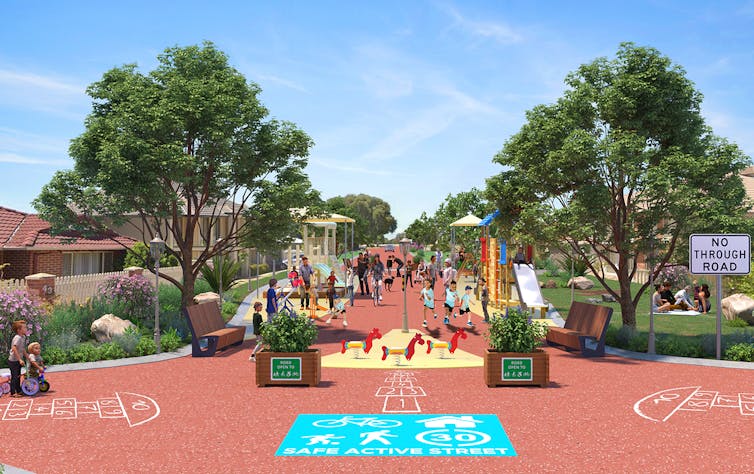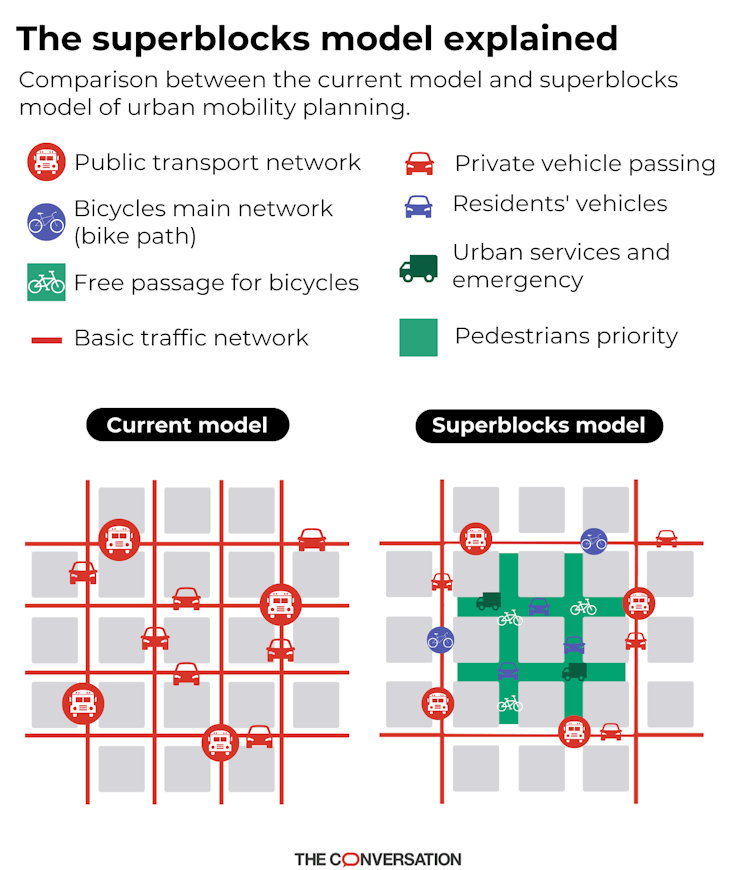Shared spaces for Avalon Beach village: works to take place over spring to be ready for summer

Change is underway in Avalon Beach, as Council rolls out a one-way shared zone on Old Barrenjoey Road, making it safer and easier for pedestrians to move through the village.
It’s all part of the Streets as Shared Spaces project, funded by the NSW Government.
Preparation for this trial will commence in October and is expected to be completed in December 2022. The trial will run for at least six months. During this time, the community is invited to share their feedback as they experience the new shared space.
Northern Beaches CEO Ray Bronwlee said the project is an important part of the recently adopted Avalon Place Plan.
“After years of community consultation and detailed consideration by the elected Council, the Avalon Place Plan has been endorsed and includes some exciting and much needed improvements to Avalon Beach Village,” Ray Brownlee said.
“Our priority is creating a place for people. Streets as shared spaces will create a safer and more people-centred experience for locals and visitors moving through Avalon Beach Village.”
Improving the Old Barrenjoey Road and Avalon Parade intersection was a major issue identified through the Avalon Place Plan community consultation.
“Thank you to everyone who has provided feedback on this issue. Together, we will create a place for people and a vibrant, safe and inclusive Avalon Beach Village,” Mr Bronwlee said.
The project is being delivered over Spring to allow the space to be fully operational in Summer.
The main changes include:
- 10km/h Shared Zone at Old Barrenjoey Road North
- Introducing one-way traffic flow in a section of Old Barrenjoey Road (south bound)
- Removing nine on-street parking spaces to provide safer pedestrian access
- Improving pedestrian crossings at the intersection of Old Barrenjoey Road and Avalon Parade
- widening footpaths to create more space for pedestrians
- additional seating and plants
- adjusting bus and taxi services
- relocating loading zones.

Avalon Beach village shared space trial - Artist's Impression. Image: NBC.
Council will work closely with local resident associations and the wider community to seek ongoing feedback throughout the six-month trial. Traffic counts and pedestrian observation studies will also be carried out to evaluate the project.
On May 4th 2022 The Hon. Rob Stokes, MP for Pittwater, announced funding for a pedestrian shared space trial within the Avalon village.
The NSW Government has allocated $500,000 to support Northern Beaches Council’s proposal for a shared pedestrian and vehicle zone at the northern end of Old Barrenjoey Road (between Avalon Parade and the Woolworths car park).
'The trial shared space will enable greater pedestrian opportunities through expanded footpaths, new landscaping and additional seating areas. Northbound vehicle access will be removed during the trial and southbound traffic will be limited to one lane only, 10km/h.' a release from Mr. Stokes office states
“This is all about supporting the vibrancy of the Avalon village, creating more open space and improving connectivity for pedestrians,” Rob Stokes said.
“This concept has been talked about for decades – but the funding hurdles have always been prohibitive in seeing it launched.
“This area of the village can be particularly busy with people moving between the shops, Dunbar Park, community facilities and the beach.
“The opportunity to create additional open space for people to relax, dine and move around the village is really exciting.
“Throughout COVID-19 we’ve seen a resurgence of people wanting to shop local, sit outdoors and explore the community. This project supports all of these elements and will provide a great case study for how the concept could be expanded elsewhere,” Rob Stokes said.
The funding has been provided through the State Government's Streets as Shared Spaces program.
Through the Streets as Shared Spaces program, councils and the state government are seeking to increase the amount of quality public space. Find out more about Streets as Shared Spaces and the Avalon Place Plan.
Previously
- Avalon Place Plan Passed By Council: Shared Space Trial To Go Ahead - Terracing Avalon Beach Greenspace Still On Agenda
- Avalon Place Plan Open For Feedback
- Avalon Beach Village Shops: Some History
- Avalon's Village Green: Avalon Park Becomes Dunbar Park - Some History + Toongari Reserve and Catalpa Reserve
- Pittwater Roads II: Where The Streets Have Your Name - Avalon Beach
Cars have taken over our neighbourhoods. Kid-friendly superblocks are a way for residents to reclaim their streets

You might remember your time as a child playing outdoors with friends and walking to school. These activities had tremendous benefits for our health and development.
Today, parents report barriers to letting their kids play, walk and ride in their neighbourhood. The safety of local streets is a major concern.
One way to boost communities is to create “superblocks for kids”. Pioneered in cities like Barcelona, a superblock covers several neighbourhood blocks reserved for shared use by cyclists, walkers and residents who simply want to use the street space. Superblocks allow low-speed access for residents’ cars, but exclude through-traffic.
Superblocks have evolved from concepts dating back to the 1970s. Retrofitted and planned examples of more liveable and safer streets can be found from Melbourne to Perth, where there are interesting alternative designs in Willetton and Crestwood.
Transforming neighbourhoods in this way enables us to once again enjoy the public space right on our doorsteps – the street.

Superblocks For Kids Are A Low-Cost Fix
Superblocks are a low-cost solution to the problem of the residential “stroad” – a street-road hybrid that drivers use to avoid congested main roads, many at unsafe speeds.
These stroads are a troubled mix of two different functions: roads are through routes, and streets connect neighbourhoods socially and physically. Streets connect houses to local parks, shops and through routes, but are also public places themselves. The dual role of stroads comes at the expense of residents and their children.
Superblocks for kids can be retrofitted to existing suburbs to create safer, quieter and more play-friendly streets. They are typically about a square kilometre in area, bounded by main roads and features such as rivers. Ideally, superblocks are clustered together to provide safe access to local amenities and public transport hubs.
Everyone can still drive to their home in a superblock, but they might have to take a slightly longer, more circular route. This can reduce traffic by nudging residents to walk and cycle short journeys within their superblock.
Various low-cost “filters” exclude through traffic. These filters include:
pocket parks – small areas of community green space
modal filters – bollards, gates or planters exclude cars but allow access for walkers and cyclists
diagonal filters – used at four-way intersections
end-of-street filters – open cul-de-sacs to walkers and cyclists
bus gates – automatic numberplate recognition or rising bollards allow bus access
The resulting superblocks are places where kids play on the streets, which are quiet and easy to cross. There’s shade and shelter, places to stop and rest, things to see and do, and the air is clean. People feel safe and relaxed. Neighbourhoods like this promote public health and community camaraderie.
Four examples of streets that could be transformed in this way are shown below:
Lyall Street, Redcliffe, Perth
A pocket park breaks up a rat run to the airport.
The Avenue, Mount St Thomas, Wollongong
Plantings and bollards eliminate a known rat run.
Lithgow Street, Abbotsford, Melbourne
Wider kerbs make school drop-offs and pick-ups safer.
Meymot Street, Banyo, Brisbane
A pocket park and residents-only car access create a safer and quieter street.
Rat-Running Is A Big Problem
Almost twice as many cars are on Australian roads today as 20 years ago. Coupled with the rise of satellite navigation technology, this has led to more drivers using residential streets as rat runs to avoid congested main roads.
Decades of prioritising cars in Australian communities have created a serious safety issue. Overall, serious road injuries are on the rise. Despite small declines in road deaths, deaths on local streets haven’t fallen.
People feel less safe on their local streets, but we know what we can do to improve safety. Preventing rat-running leads to cleaner air, less noise, safer streets and more walking, riding, wheelchairs and mobility scooters. These results all promote stronger communities.
Everyone Benefits From Kid-Friendly Neighbourhoods
A remarkable feature of building neighbourhoods for kids is how quickly residents reoccupy their streets. People emerge from their houses to talk, their voices no longer drowned by vehicle noise. Thoroughfares become communities. Children come out to play.
As physical activity researchers, we know that getting children to move more is an urgent issue. Australian kids score a D- for overall physical activity levels on international ratings. Australian adults also have low levels of physical activity.
Neighbourhoods for kids help everyone enjoy the benefits of becoming more active. For kids, the street can connect them to nature and help them develop movement and independent travel skills for life.
Increasing neighbourhood liveability also boosts house prices and reduces noise pollution.
Leaving The Car At Home For Short Local Trips
Superblocks make it easier for families to choose the “right tool for the job” for small local trips — a bicycle over a car. This saves money and improves health.
All these small trips add up. For example, two-thirds (2.8 million) of daily car trips in Perth are under 5km — a 20-minute bike ride or less. In Melbourne, 41% of trips are under 3km, but 58% of these are by car. That’s 3.6 million car trips a day.
Where Should Australia Start?
Our research highlights the need to listen to communities, and kids in particular, when designing neighbourhoods.
In the vast majority of cases, any initial opposition to creating kid-friendly neighbourhoods soon dissipates. Residents see the benefits of safer and more pleasant streets for themselves and their families.
Two-thirds of Australians support improving their neighbourhood to help them be more active. We should start by creating neighbourhoods for the communities that need it most — those with the poorest access to green space and public transport, most through traffic and crashes, and highest levels of childhood obesity.
Get your community talking again! You can start by hosting a temporary play street! Demonstrating its success will help when asking your council for permanent changes.
The authors encourage the reuse of the re-imagined streets. They are freely available to download in multiple open-access formats.![]()
Matthew Mclaughlin, Research Fellow, Telethon Kids Institute, The University of Western Australia; Hayley Christian, Associate Professor, School of Population and Global Health, The University of Western Australia; Jasper Schipperijn, Professor of Active Living Environment, University of Southern Denmark, and Trevor Shilton, Adjunct Professor, School of Public Health, Curtin University
This article is republished from The Conversation under a Creative Commons license. Read the original article.